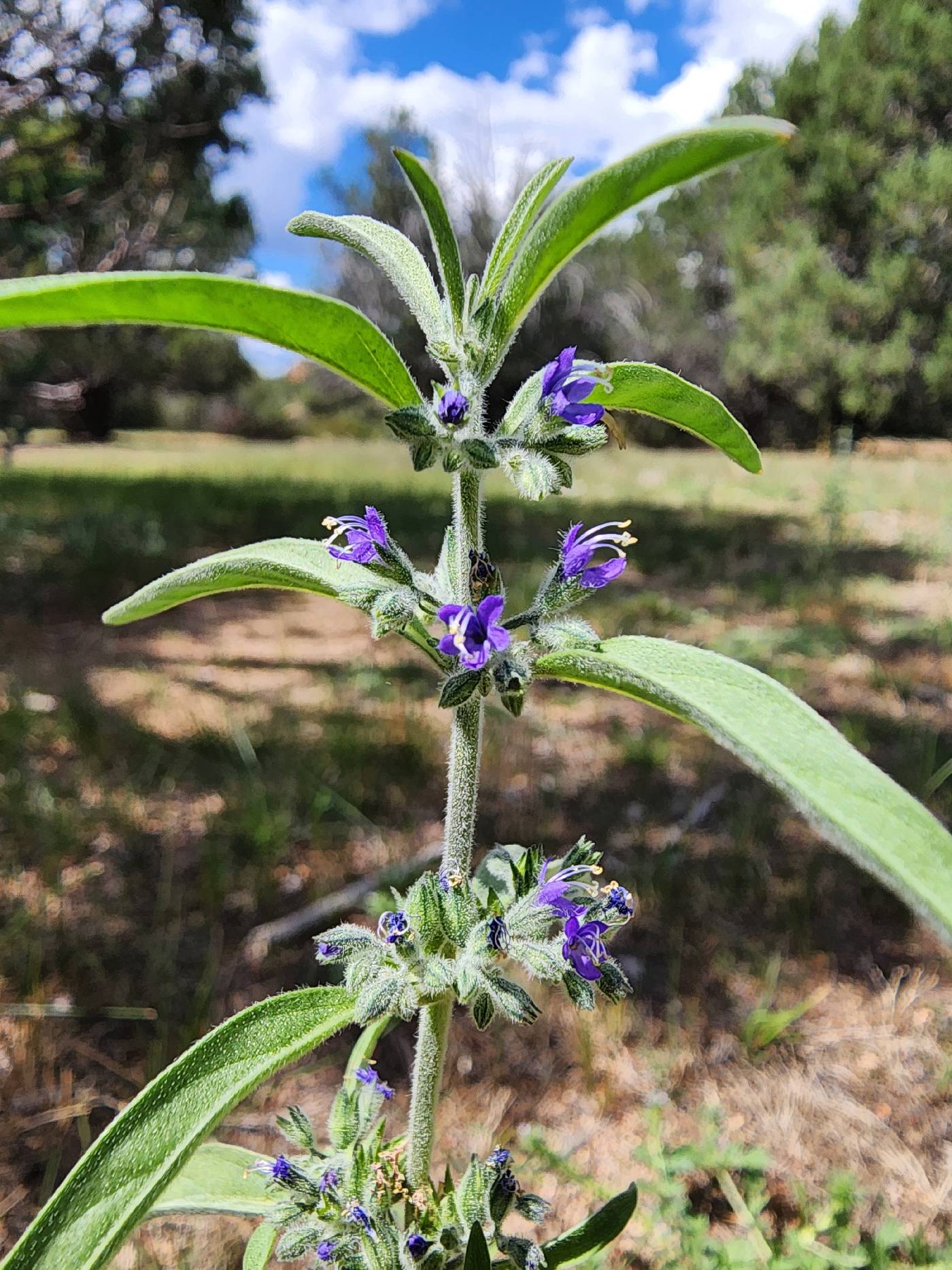
|
Family: Lamiaceae |
PLANT: Annual taprooted herbs or suffrutescent perennials, pubescent; stems erect or decumbent at base, freely branched. LEAVES: petiolate or subsessile; blades linear to ovate; margins entire or dentate, rarely lobed. INFLORESCENCE: panicles of cymes; bracts leafy or reduced. FLOWERS: pedicellate; calyx actinomorphic or zygomorphic, slightly enlarging in fruit, the lobe apices acuminate; corolla zygomorphic, 5 lobed, not bilabiate due to deeply lobed upper lip, the tube shorter or longer than calyx; stamens 4, exserted, the anther sacs slightly to strongly divaricate with none abortive; ovary sessile, lobed in upper ; stigma unevenly 2 lobed. NUTLETS: obovoid, rugose reticulate or irregularly ridged, often pubescent. x = 7, 10, 19. NOTES: 17 spp.; se Can. to Pue., Mex. (Greek.: thrix = hair and stema = stamen, referring to the thin, elongate filaments). Lewis, H. 1945. Brittonia 5:276 303. REFERENCES: Christy, Charlotte M. 2003. Lamiaceae. J. Ariz. - Nev. Acad. Sci. Volume 35(2). Cal 10-nerved, campanulate, regular or (ours) 2- lipped and becoming inverted, the morphological upper lip with 3 partly connate teeth, the lower evidently shorter, with 2 distinct teeth; cor irregular, the lowest lobe the largest, declined, the other 4 subequal and more than half as long as the lowest one, the sinus between the 2 upper lobes scarcely more prominent than the lateral sinuses; stamens 4, exserted, the filaments often (as in our spp.) arcuate; pollen-sacs divaricate, often confluent in dehiscence; ovary rather deeply 4-lobed, the sculptured nutlets laterally attached, united above 1/3 their length; herbs or near-shrubs with mostly entire lvs; fls borne in cymose axillary clusters. 16, N. Amer. Gleason, Henry A. & Cronquist, Arthur J. 1991. Manual of vascular plants of northeastern United States and adjacent Canada. lxxv + 910 pp. ©The New York Botanical Garden. All rights reserved. Used by permission. |
This project was made possible in part by the Institute of Museum and Library Services [MG-70-19-0057-19].
Powered by Symbiota



